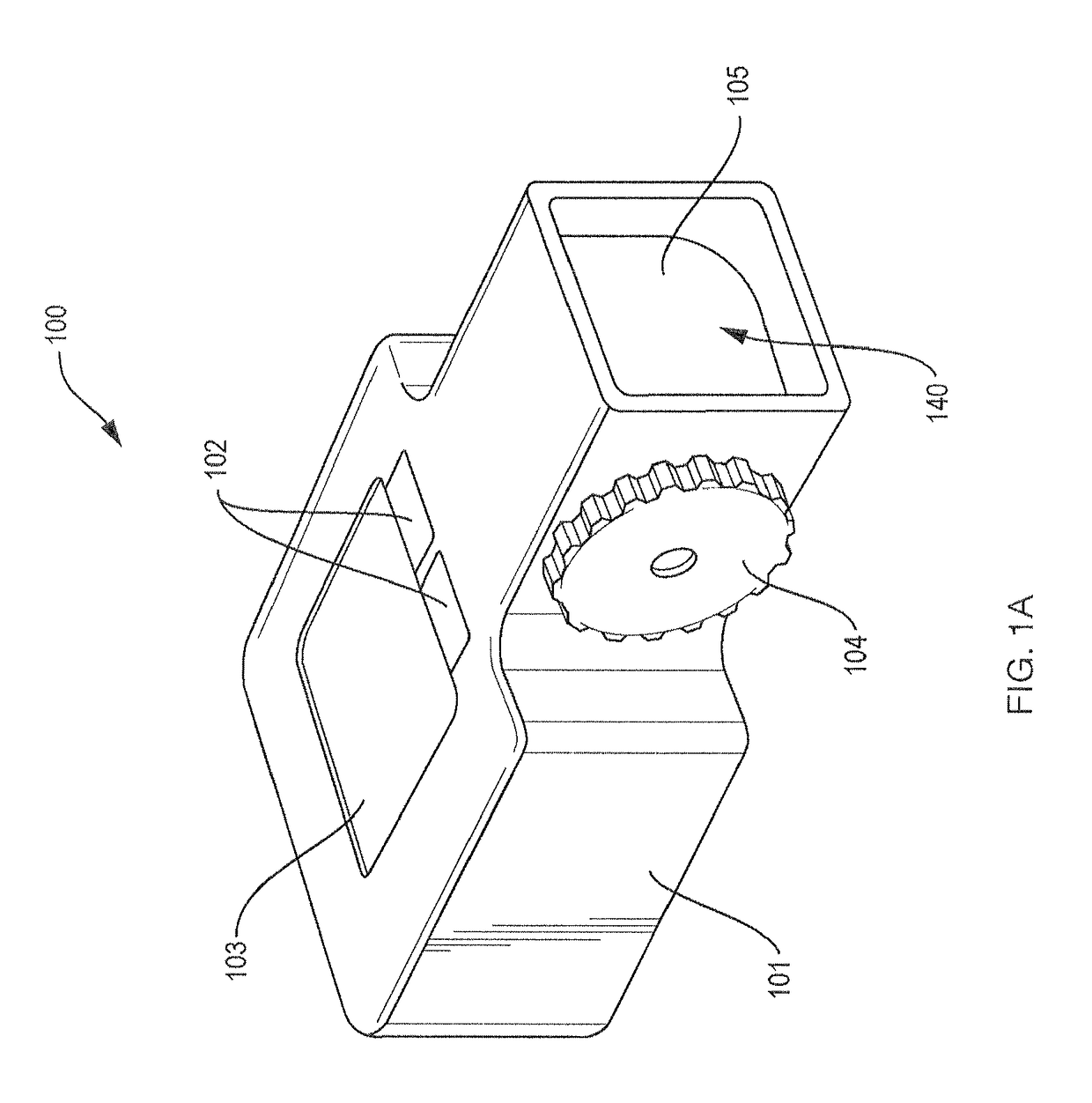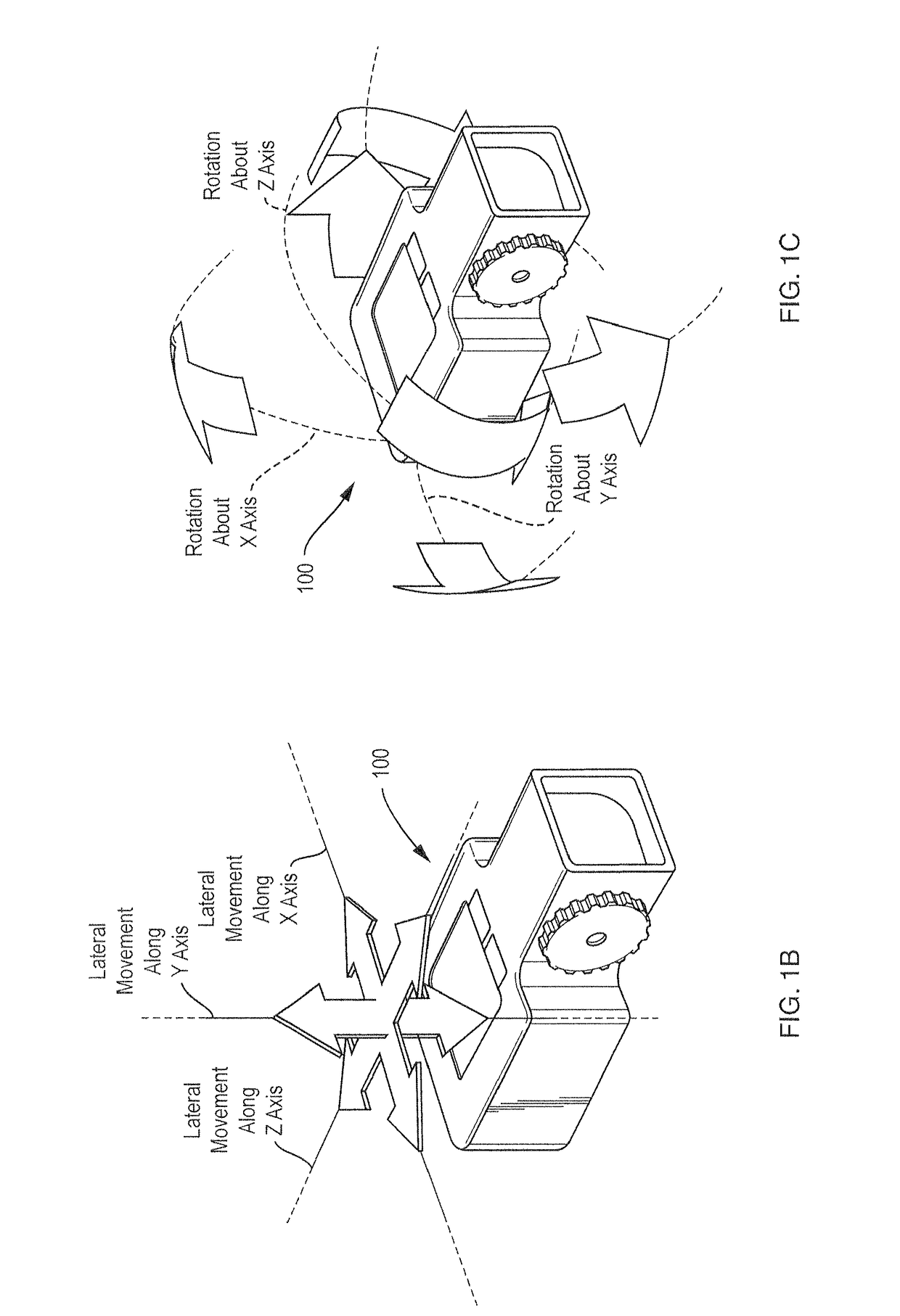Head worn wireless computer having high-resolution display suitable for use as a mobile internet device
a wireless computer and high-resolution display technology, which is applied in the field of head worn wireless computer having high-resolution display suitable for use as a mobile internet device, can solve the problems of not providing the best viewing experience in all situations, not providing optimal viewing comfort for all users, and achieving the effect of great convenience and mobility
- Summary
- Abstract
- Description
- Claims
- Application Information
AI Technical Summary
Benefits of technology
Problems solved by technology
Method used
Image
Examples
Embodiment Construction
[0038]A description of example embodiments of the invention follows.
[0039]FIG. 1A is a perspective view of a first embodiment of a handheld wireless display device 100 having a housing 101 that incorporates a high-resolution (SVGA or better) microdisplay element 140. The housing 101 may also include a number of buttons 102, track pad 103, Capacitive or resistive touch pads 102, a small touch screen or track pad 103, and / or a scroll wheel 104 to allow a user to provide control inputs thereto. Audio input and / or output device(s), which may include microphone input and stereo outputs, may also be placed in the housing 101 (not shown). A Secure Digital (SD), eXteme Digital (xD), Universal Serial Bus (USB) integral SD (uSD) memory or other similar interfaces (not shown) may or may not be stored in the housing 101, and may be used to store application programs, kernel directives, configuration data, and / or connect to external devices.
[0040]The microdisplay element 140 is preferably a ligh...
PUM
 Login to View More
Login to View More Abstract
Description
Claims
Application Information
 Login to View More
Login to View More - R&D
- Intellectual Property
- Life Sciences
- Materials
- Tech Scout
- Unparalleled Data Quality
- Higher Quality Content
- 60% Fewer Hallucinations
Browse by: Latest US Patents, China's latest patents, Technical Efficacy Thesaurus, Application Domain, Technology Topic, Popular Technical Reports.
© 2025 PatSnap. All rights reserved.Legal|Privacy policy|Modern Slavery Act Transparency Statement|Sitemap|About US| Contact US: help@patsnap.com



